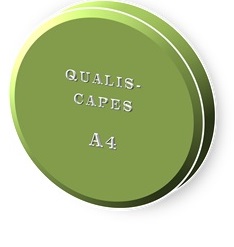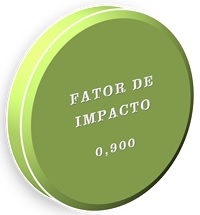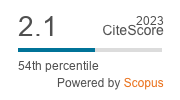Biofertilizante enriquecido com Paenibacillus polymyxa e Trichoderma sp. para o cultivo de rabanete
DOI:
https://doi.org/10.1590/1983-21252025v3813759rcPalavras-chave:
Biofertilizante. Microrganismos eficientes. Agricultura sustentável. Inoculação microbiana. Raphanus sativus L..Resumo
Resíduos agrícolas podem ser transformados em fertilizantes orgânicos através da inoculação de microrganismos eficientes, que influenciam o crescimento das plantas, resistência a doenças e pragas, e estimulam as atividades fisiológicas. O objetivo principal deste estudo foi desenvolver um biofertilizante a partir de resíduos agrícolas utilizando fermentação anaeróbica, inoculado com Paenibacillus polymyxa e Trichoderma sp., para o cultivo de três cultivares de rabanete (Raphanus sativus L): Scarlet Champion, Crimson Giant e Reggae. O experimento seguiu um delineamento de blocos totalmente casualizados (DBCA) com 12 tratamentos e cinco repetições, totalizando 60 unidades experimentais. A mistura de inoculação consistia em 10% de biofertilizante, 89,65% de água de irrigação e 0,35% de P. polymyxa ou Trichoderma sp. A fertilização foi aplicada no solo aos 7, 12 e 17 dias após o plantio. As três cultivares de rabanete apresentaram maiores taxas de sobrevivência, altura das plantas, diâmetro dos bulbos, peso da folhagem e peso dos bulbos quando tratadas com o biofertilizante enriquecido com P. polymyxa, o que influenciou suas características morfológicas. Essa abordagem permite aos agricultores reduzir o uso de fertilizantes químicos, diminuir custos econômicos e desenvolver novos produtos biotecnológicos ambientalmente amigáveis. O biofertilizante enriquecido com P. polymyxa aprimorou significativamente a morfologia das plantas em todas as três cultivares de rabanete. O Crimson Giant alcançou uma taxa de sobrevivência de 100% durante a fertilização, com altura de planta de 26,49 cm aos 32 dias, diâmetro do bulbo de 4,78 cm, peso da folhagem de 0,81 kg e peso do bulbo de 46,00 g.
Downloads
Referências
ABOYEJI, C. M. et al. Growth, yield and vitamin C content of radish (Raphanus sativus L.) as affected by green biomass of Parkia biglobosa and Tithonia diversifolia. Agroforestry Systems, 93: 803-812, 2019.
AL-HUQAIL, A. A. et al. Sustainable Valorization of Four Types of Fruit Peel Waste for Biogas Recovery and Use of Digestate for Radish (Raphanus sativus L. cv. Pusa Himani) Cultivation. Sustainability, 14: 10224, 2022.
BADAGLIACCA, G. et al. Effect of Solid Digestate Amendment on The Dynamics of N Soluble Forms in Two Contrasting Soil Profiles under Mediterranean Environment. Agriculture, 13: 1311, 2023.
BALBANDE, V. et al. Effect of integrated nutrient management on growth, yield and quality of radish (Raphanus sativus L.) cv MAHY 22. The Pharma Innovation Journal, 12: 1103-1107, 2023.
BEYKKHORMIZI, A. et al. Effect of vermicompost on some morphological, physiological and biochemical traits of bean (Phaseolus vulgaris L.) under salinity stress. Journal of Plant Nutrition, 39: 883-893, 2016.
BULIGON, E. L. et al. Fertilizer Performance of a Digestate from Swine Wastewater as Synthetic Nitrogen Substitute in Maize Cultivation: Physiological Growth and Yield Responses. Agriculture, 13: 565, 2023.
CHONTAL, M. A. H. et al. Nutrient content of fermented fertilizers and its efficacy in combination with hydrogel in Zea mays L. International Journal of Recycling of Organic Waste in Agriculture, 8: 309-315, 2019.
DAUD, N. et al. Paenibacillus polymyxa bioactive compounds for agricultural and biotechnological applications. Biocatalysis and Agricultural Biotechnology, 18: 101092, 2019.
ETESAMI, H; JEONG, B.R; GLICK, B. Potential use of Bacillus spp. as an effective biostimulant against abiotic stresses in crops - A review. Current Research in Biotechnology, 5: 100128, 2023.
GALIC, M; BILANDZIJA, D; ZGORELEC, Z. Influence of Long-Term Soil Management Practices on Carbon Emissions from Corn (Zea mays L.) Production in Northeast Croatia. Agronomy, 13: 2051, 2023.
GARCIA, T. et al. Combined effect of biochar and fertilizers on Andean Highland soils before and after cropping. Sustainability, 14: 8912, 2022.
LAMOLINARA, B. et al. Anaerobic digestate management, environmental impacts, and techno-economic challenges. Waste Management, 140: 14-30, 2022.
LANGENDRIES, S; GOORMACHTIG, S. Paenibacillus polymyxa, a Jack of all trades’, Environmental Microbiology, 23: 5659-5669, 2021.
LI, X. et al. Characterization of Antagonistic Bacteria Paenibacillus polymyxa ZYPP18 and the Effects on Plant Growth. Plants, 12: 2504, 2023.
MANZAR, N. et al. Trichoderma: Advent of Versatile Biocontrol Agent, Its Secrets and Insights into Mechanism of Biocontrol Potential. Sustainability, 14: 12786, 2022.
MOLINA, S. C; MATILLA, M. A. Chemical fertilization: a short-term solution for plant productivity. Microbial Biotechnology, 13: 1311-1313, 2020.
OLIVEIRA NETO, H. T. et al. Growth, gas exchanges and production of beet CV. katrina under organo-mineral fertilization. Bioscience Journal, 33: 1126-1133, 2017.
OMER, R.M. et al. Chemical, Anatomical, and Productivity Responses of Cowpea (Vigna unguiculata L.) to Integrated Biofertilizer Applications with PGPR, Cyanobacteria, and Yeast. Sustainability, 15: 7599, 2023.
ORTIZ, N. et al. Improved Organic Fertilisers Made from Combinations of Compost, Biochar, and Anaerobic Digestate: Evaluation of Maize Growth and Soil Metrics. Agriculture, 13: 1557, 2023.
PII, Y. et al. Microbial interactions in the rhizosphere: beneficial influences of plant growth-promoting rhizobacteria on nutrient acquisition process. A review. Biology and Fertility of Soils, 51: 403-415, 2015.
PRADO, J. et al. Assessment of the Agronomic Value of Manure-Based Fertilizers. Agronomy, 13: 140, 2023.
RAN, J. et al. Paenibacillus polymyxa Antagonism towards Fusarium: Identification and Optimisation of Antibiotic Production. Toxins, 15: 138, 2023.
SAMORAJ, M. et al. The challenges and perspectives for anaerobic digestion of animal waste and fertilizer application of the digestate. Chemosphere, 295: 133799, 2022.
SOLOMOU, N. et al. The Design and Performance Prediction Model of an Integrated Scheme of a Membrane Bioreactor and Anaerobic Digester for the Treatment of Domestic Wastewater and Biowaste. Sustainability, 15: 11455, 2023.
SUHANI, I. et al. Effect of Compost and Vermicompost Amendments on Biochemical and Physiological Responses of Lady’s Finger (Abelmoschus esculentus L.) Grown under Different Salinity Gradients. Sustainability, 15: 11590, 2023.
VELECELA, S. et al. Microbial enrichment vermicompost under two production system and its effects on radish (Raphanus sativus L.) production. Scientia Agropecuaria, 10: 229-239, 2019.
WEI, X. et al. Enhancing Soil Health and Plant Growth through Microbial Fertilizers: Mechanisms, Benefits, and Sustainable Agricultural Practices. Agronomy, 14: 609, 2024.
ZHENG, W. et al. Comparative Evaluation of Microbially-Produced Biostimulants on Peanut Growth. Sustainability, 15: 8025, 2023.
Downloads
Publicado
Edição
Seção
Licença
Os Autores que publicam na Revista Caatinga concordam com os seguintes termos:
a) Os Autores mantêm os direitos autorais e concedem à revista o direito de primeira publicação, com o trabalho simultaneamente licenciado sob a Licença Creative Commons do tipo atribuição CC-BY, para todo o conteúdo do periódico, exceto onde estiver identificado, que permite o compartilhamento do trabalho com reconhecimento da autoria e publicação inicial nesta revista, sem fins comerciais.
b) Os Autores têm autorização para distribuição não-exclusiva da versão do trabalho publicada nesta revista (ex.: publicar em repositório institucional ou como capítulo de livro), com reconhecimento de autoria e publicação inicial nesta revista.
c) Os Autores têm permissão e são estimulados a publicar e distribuir seu trabalho online (ex.: em repositórios institucionais ou na sua página pessoal) a qualquer ponto antes ou durante o processo editorial, já que isso pode gerar alterações produtivas, bem como aumentar o impacto e a citação do trabalho publicado (Veja O Efeito do Acesso Livre).







